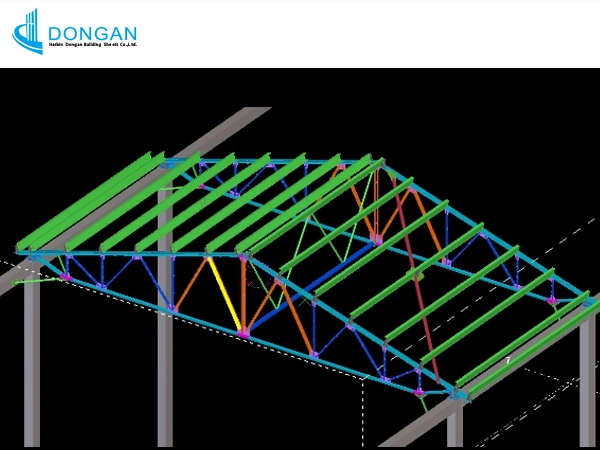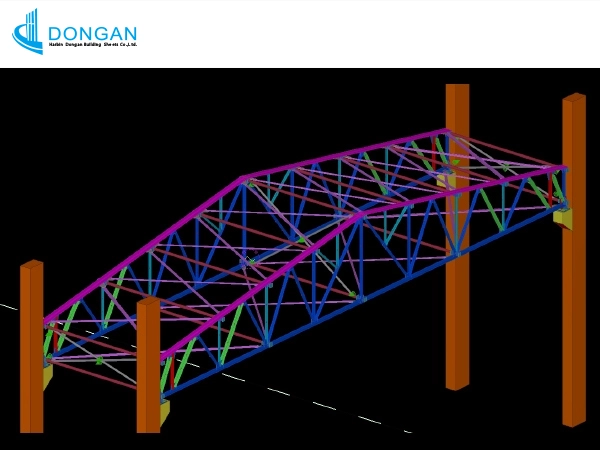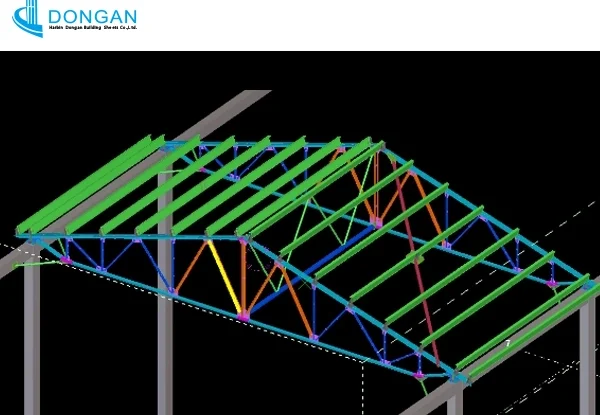In modern architecture, fabricated steel structures are widely used due to their durability, cost-effectiveness, and ease of assembly. The roof trusses are important in providing stability and support aspects. The two common types are the triangular roof truss and the T-shaped roof truss, they have advantages and disadvantages each.
1. Triangular roof truss: design and advantages
The triangular roof truss is one of the most traditional and widely used in steel structure. The simple geometric shape provides outstanding load distribution and stability.
Advantages:
- High strength by weight: Natural and uniform distribution of loads in a triangular shape, allowing it to efficiently span long distances without excessive use of materials.
- Structure stability: A Triangular framework can resist bending and deformation, making it an ideal choice for areas susceptible to strong winds and earthquakes.
- Easy to make: Due to the relatively simple manufacturing and assembling of the triangular truss, it reduces construction time.
- Versatility: It can be applied to various roof styles, such as Gables, sloping roofs, and sloping roofs.
Structure Stability and Application
The triangular trusses apply to the architecture of uniform loads distribution, such as industrial storehouses, agricultural greenhouses, sloping roof residences, and sports fields.

2. T-shaped roof truss: design and advantages
The T-shaped roof truss is a modern variation that combines vertical and horizontal elements, offering unique benefits for specific architectural needs.
Advantage:
- Enhanced Aesthetic Appeal: The T-shape allows for more creative and contemporary architectural design, making it popular in business and institutional structures.
- Flexibility in roof layouts: The horizontal beam can support additional roofing layers or mezzanine floors, providing functional versatility.
- Suitable for Flat and Low-Slope Roofs: Different from triangular trusses, T-shaped trusses are ideal for structures requiring minimal roof pitch.
Structure stability and application
- Shaped roof trusses are best suited for:
- Commercial buildings with flat or low-slope roofs
- Multi-story structures requiring integrated roof and floor support
- Modern architectural projects emphasizing aesthetics

3. Comparative Analysis: Triangular roof truss VS T-shaped roof truss
| Feature | Triangular roof truss | T-shaped roof truss |
| Load distribution | Excellent (evenly distributed) | Moderate (requires reinforcement) |
| Material efficiency | High (minimal waste) | Lower (more joints & supports) |
| Design flexibility | Limited (fixed shape) | High (adaptable to modern designs) |
| Manufacturing complexity | Low (simple geometry) | High (more components) |
| Cost effectiveness | More economical | More expensive |
| Best applications | Industrial, residential, agricultural | Commercial, institutional, modern architecture |
4. Conclusion
Triangular roof truss and T-shaped roof truss have different functions on fabricated steel structures. The triangular roof truss is the ideal choice; it requires high strength, stability, and cost efficiency, while the T-shaped truss offers greater design flexibility for modern and commercial buildings.
When selecting the roof Truss system, engineers must consider load requirements, architectural design, budget, and environmental conditions. By understanding the characteristics of each type, architectural professionals can optimize structural performance and achieve durable and efficient buildings.






